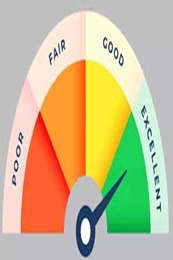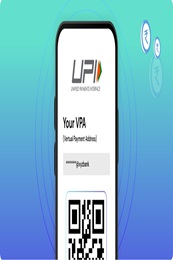What is CVV Code in Debit Card and How to Find It?
April 15, 2025

In today’s digital age, online transactions have become a part of our daily lives. Whether it’s ordering your favourite meal, booking a vacation, or paying utility bills, the convenience of using debit and credit cards is unmatched. But have you ever wondered how your card details remain secure during these transactions? The answer lies in a small but mighty feature known as the CVV. This three or four-digit number acts as a gatekeeper, ensuring your financial information stays safe from potential fraudsters. Let’s dive deeper into what CVV is, where to find it, and why it’s so essential for secure transactions.
This article delves into what CVV means, its importance, and its role in enhancing transaction security.
CVV Full Form and Meaning
The full form of CVV is Card Verification Value. The CVV number is a three-digit number or code that acts as an additional layer of security for your debit and credit card transactions. Note that when we say three-digit, we’re talking about VISA, MasterCard, Discover and RuPay Debit Cards. The CVV code is printed at the back of these Debit Cards. However, if you have an American Express Credit Card, you will find a 4-digit CVV code right at the front of the card. The CVV code ensures that only the person in possession of the card can use it, particularly for online transactions.
The CVV number is unique to every card and is generated using the card’s primary account number, expiration date, and a secure algorithm. While the specifics of its generation remain confidential for security reasons, its purpose is straightforward: to protect cardholders from unauthorized usage.
Where Can You Find the CVV Number?
The location of the CVV varies based on the type of card:
- Debit Cards: Typically found on the back of the card, next to the magnetic stripe. It is a three-digit number.
Credit Cards:
- VISA and MasterCard: A three-digit number located on the back, above the signature strip.
- American Express: A four-digit number on the front of the card, above the account number.
CVV in Debit Card vs. PIN
While both CVV and PIN (Personal Identification Number) enhance security, they serve different purposes:
| Feature | CVV Number | PIN |
| Purpose | For online transactions | For ATM withdrawals and POS payments |
| Location | Printed on the card | Not printed; memorised by the user |
| Changeability | Permanent, linked to the card | Can be changed by the user |
How CVV Protects Your Transactions
1. Online Transactions:
- The CVV acts as a verification step to ensure that the transaction is initiated by the cardholder.
- For online purchases, you need to enter the CVV number, along with your card details and OTP (One-Time Password).
2. Prevents Data Breaches:
Merchants are prohibited from storing CVV numbers, even if they save your card details. This ensures that your CVV remains secure even if the merchant’s database is compromised.
3. Enhances Security:
- The CVV is not encoded on the magnetic stripe, making it impossible to replicate during a skimming attack.
What are CVV2 Numbers?
You may have come across the term “CVV2” while reading about card security. CVV2 refers to the second-generation Card Verification Value. It serves the same purpose as the original CVV but is specifically used for online and card-not-present transactions. The distinction lies in its enhanced security algorithms.
Why Is the CVV Confidential?
The CVV number is a critical component of card security and should always remain confidential. Here are some key reasons:
- Sharing your CVV with others can lead to unauthorized transactions.
- Scammers may use phishing techniques to obtain your CVV. Always verify the authenticity of requests for card details.
- Banks and financial institutions never ask for your CVV over calls, emails, or messages.
Tips to Protect Your CVV
- Avoid Public Wi-Fi: Use a secure internet connection for online transactions.
- Use Trusted Websites: Only shop on websites with HTTPS and a padlock symbol in the address bar.
- Enable Alerts: Activate transaction notifications to monitor card usage.
- Install Antivirus Software: Protect your devices from malware and phishing attacks.
- Avoid Sharing Card Details: Do not share photos or write down your card information, including the CVV.
- Beware of Phishing Scams: Be cautious of unsolicited emails or messages asking for your card details.
Common Misconceptions About CVV
- CVV is the same as the card PIN: This is incorrect. CVV is for online verification, while PIN is for physical transactions and ATM usage.
- CVV can be changed: Unlike PINs, CVVs are permanent and tied to the card.
- CVV is stored by merchants: Reputable merchants cannot legally store CVV numbers after a transaction.
Final Thoughts
The CVV code in your ATM or debit card is a vital security feature designed to protect cardholders during online transactions. By understanding its importance and following best practices, you can ensure safe and secure use of your debit and credit cards. Always remember, safeguarding your CVV is a key step in protecting your financial information.
Enjoy easy banking with Ujjivan Small Finance Bank. Save more with our high-interest Savings Account and Deposit products. Need cash for your business or personal needs? Apply for MSME Loans or Micro Loans with us – we offer competitive rates and quick disbursal. We also offer vehicle loans and home loans tailored for your unique requirements. Experience a smooth banking journey with Ujjivan SFB!
FAQs
1. What is the full form of CVV?
CVV stands for Card Verification Value. It is a security feature on debit and credit cards.
2. Where is the CVV number in a debit card?
The CVV number is located on the back of the card, next to the magnetic stripe.
3. What is the difference between CVV and CVV2?
CVV2 is an updated version of CVV, designed for online and card-not-present transactions with enhanced algorithms.
4. Can a CVV number be changed?
No, the CVV is permanently linked to the card and cannot be changed unless the card is replaced.
5. Why is CVV important for online transactions?
CVV verifies that the transaction is initiated by the cardholder, adding a layer of security.
6. Can merchants store my CVV number?
No, merchants are legally prohibited from storing CVV numbers after a transaction.
7. Is CVV used for ATM transactions?
No, ATM transactions require a PIN, not a CVV.
8. What happens if someone knows my CVV?
If someone has your CVV and card details, they can perform unauthorized online transactions. Always keep your CVV confidential.
9. What is CVV in an ATM card?
CVV in an ATM card refers to the three-digit number on the back, used for online transactions.
10. How is a CVV generated?
CVV is generated using the card’s account number, expiration date, and a secure algorithm, ensuring its uniqueness and security.
Latest Blogs

Telangana Housing Board & KPHB Colony: A Guide to Affordable Urban Housing in Hyderabad
March 14, 2025
As Telangana continues its rapid urbanisation journey, two key housing entities—Telangana Housing Board (THB) and Kukatpally Housing Board Colony (KPHB)—have played critical roles in shaping the state's real estate ecosystem.

Does Checking CIBIL Score Frequently Lower Your Credit Points?
April 07, 2025
Imagine you're planning to apply for a home loan, a credit card, or even a car loan. Naturally, you want to ensure your CIBIL score is in good shape before proceeding.

Explained: Can NRIs Buy an Agricultural Land in India?
April 03, 2025
Real estate investment is often a top priority for Non-Resident Indians (NRIs) looking to retain strong financial ties to India.

How to Improve Your CIBIL Score from 600 to 750: A Step-by-Step Guide
April 02, 2025
Your CIBIL score is like your financial reputation—banks check it before approving loans or credit cards. If your score is hovering around 600, you might face difficulties in securing credit or may get loans with higher interest rates.

What Happens When You Leave Your Savings Account Unused?
April 01, 2025
Imagine waking up one day to find that your hard-earned money is locked away and inaccessible. Sounds stressful, right? This is precisely what happens when you leave your Savings Account inactive for too long.





